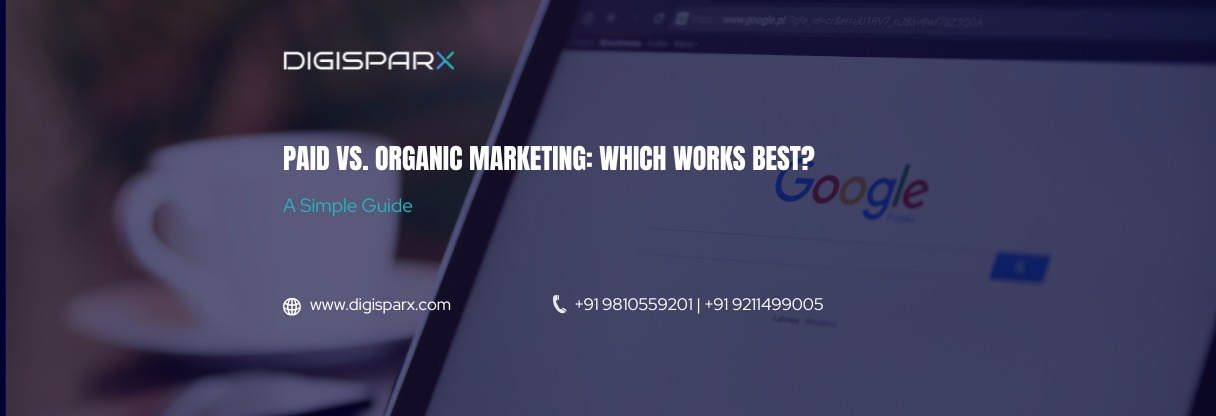
Online marketing has become a necessity in every company. But the main question many people ask is, should you use paid and organic marketing? They are both strong, and in very different ways.
People say that sponsored advertisements have fast results. Some people are also of the opinion that organic marketing provides long-term trust. In this blog, we will explain the organic marketing meaning, show paid vs. organic marketing examples, and give you clear steps to decide which one is right for your business.
And when you want answers that are clear, read on.
We will start with organic marketing. The meaning of organic marketing is easy. By that, I mean all the free promotions you do for your brand online. You are not paying per click or per view. Rather, you post useful information that appeals to individuals in the most natural manner.
Here are some common organic marketing examples:
One of the most appealing aspects of organic marketing is its realism. Individuals understand that you are not shoving advertisements on them. You are instead providing them with helpful information.
As an illustration, a person may go online and type “how to get more Instagram followers,” and your blog will provide this information, and this person will believe you. It is the strength of organic marketing.
And now, we will examine paid marketing. Paid marketing refers to the use of money to connect with your target market quickly. You pay to be seen, and your brand appears immediately in front of the decent people.
Some common paid marketing examples are:
In the case of paid marketing, the right audience can be reached within minutes. As an example, in the case of your fitness brand, you can place ads only to people who have searched for the best gym in Delhi. This provides you with quicker leads and sales.
The disadvantage lies in the fact that with paid marketing, the moment you stop paying, the marketing stops. This is the reason why it is balanced with organic marketing by most companies.
So, what is the real difference between paid versus organic in digital marketing? Let’s break it down:
To put it in a nutshell, organic marketing is planting a tree. It is time-consuming, but when it matures, it provides shade permanently. Paid marketing is similar to purchasing fruit on the market; you receive it promptly, but only as long as you continue paying.
Let’s make it more practical with some paid vs. organic marketing examples:
These paid vs. organic marketing examples show how both can work together.
Organic marketing is optimal in cases where:
Good organic marketing examples include educational YouTube videos, detailed blogs, and SEO content. These make you have power and attract traffic even after many years.
Paid marketing is effective when:
Classic paid marketing examples are Google Ads, Instagram sponsored posts, and YouTube campaigns. These are capable of hooking in customers within days, but you still need to continue investing.
The most intelligent companies do not simply pick one. They use paid and organic marketing together.
Here’s why:
As an illustration, in case you are a small business, you can be running paid Google Ads and at the same time doing SEO friendly blogs. The blogs will position themselves with time, and you will be in a position to reduce the amount of money you spend on advertisements.
Digisparx Digital Solution is one of the leading digital marketing agencies in Delhi and can help you out, should you need expert assistance. They are aware of the way to strike a balance between paid and organic approaches.
Not only can they carry on campaigns that bring leads today, but also develop an organic presence that would provide you with free traffic tomorrow.
It is obvious where digital marketing is going: paid and organic will remain significant.
This is the reason why you should invest in them both.
Q1. What does organic marketing meaning?
Organic marketing is the free way of promoting your brand online, such as blogs, SEO, and social media posts without ads.
Q2. What is the distinction between organic and paid marketing?
Organic marketing is completely free, and it builds trust gradually, whereas paid marketing is expensive, but it has immediate access.
Q3. Which ad network pays the most?
The most popular and the best-paying ad network is Google AdSense, though there are other networks, such as Media.net and AdThrive, which are also good payers.
Q4. What is the way to do organic marketing?
To grow organically, you need to create SEO blogs, post on social media, email, and share value-driven content regularly.
Q5. Which ads pay the most?
The highest paying video and display ads tend to use high CPC keywords, especially in such niches as finance, health, and technology.
So, which one drives better results–paid and organic marketing? The answer is not either/or. The combination of the two is the true winner.
That is why the smartest businesses invest in paid and organic marketing together.
And in case you require any professional assistance, Digisparx Digital Solution is a reliable digital marketing company in Delhi that can assist you in creating the best game plan.